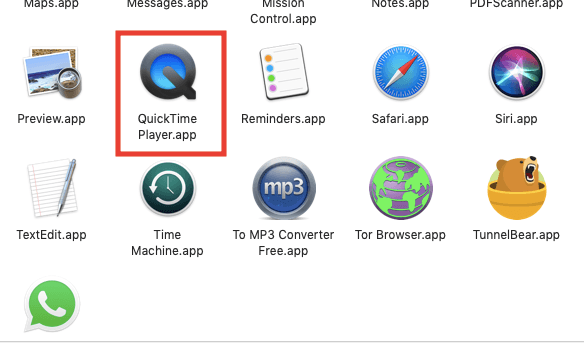

- Quicktime for mac is being weird movie#
- Quicktime for mac is being weird mp4#
- Quicktime for mac is being weird software#
Quicktime for mac is being weird mp4#
An hour of MP4 video consumes only 1.3GB of disk space, versus 13GB uncompressed. (Both wrapped as QuickTime MOV files.) The difference in image quality is negligible, but the storage savings are huge.
Quicktime for mac is being weird movie#
Select a few clips, click Combine, and LifeFlix assembles your memories into a new movie without unwanted footage.īy default, LifeFlix compresses incoming NTSC or PAL video using YouTube-friendly H.264 at a fixed data rate of 3.3Mbps, but you can uncheck this option before each import and transcode full uncompressed video instead. The App Store needs more video apps like this.) J.R. (I hope the developers consider an iOS version. You can’t add titles, transitions, or effects, which is perfectly fine-most of the time I just want to remove the bad stuff and assemble a standalone movie, and that’s exactly what LifeFlix excels at. Instead, you remove unwanted clips, then trim and combine the rest into one or more new videos. LifeFlix doesn’t edit video in the traditional sense.

LifeFlix automatically detects when the camcorder started or stopped, splitting footage into separate scenes you can then save individually or combine into new videos.

Quicktime for mac is being weird software#
LifeFlix conveniently mutes the audio while capturing, but I’d like to have the option to listen along in a future update.Īlthough video editing software like iMovie imports DV footage, such applications aren’t well-suited to the task of quickly capturing and assembling bits and pieces from a tape. You’ll see a preview of the video, but LifeFlix thoughtfully mutes incoming audio during capture-a nice feature, although I’d prefer an option to listen along, preferably with volume control. The software prompts you to enter a unique tape name and optional description after confirming, the tape conveniently rewinds to the beginning and starts capturing. With the hard part out of the way, stick a tape in the camcorder, launch LifeFlix, and click the Import button. Bookwalter/IDGĬlick Import, add a name and optional description, and LifeFlix starts capturing tapes into the computer as either MP4 or uncompressed MOV files. You can overcome this hurdle by investing in a Thunderbolt to FireWire Adapter ($29 at Apple) most users will also need a FireWire 400 to 800 Adapter sold by Elago ($10 on Amazon) that I used to connect my aging JVC SR-VS30 Mini-DV/S-VHS combo deck, as well as a Canon HV20 HDV camcorder. This will be the biggest stumbling block for many, since Apple abandoned FireWire in 2012. First, dust off your Mini-DV, HDV, Hi-8, or Digital 8 camcorder and attach it to the Mac with a FireWire cable. LifeFlix streamlines the process of capturing tapes in three easy steps. LifeFlix: Attach your camcorder and import the video For those who want to relive those taped digital memories, LifeFlix is a Mac application that makes it simple to do. With its simple FireWire connectivity, the DV format had a great run prior to the advent of smartphones. If you shot home videos between 19, there’s a good chance you did so with a tape-based Mini-DV camcorder.


 0 kommentar(er)
0 kommentar(er)
